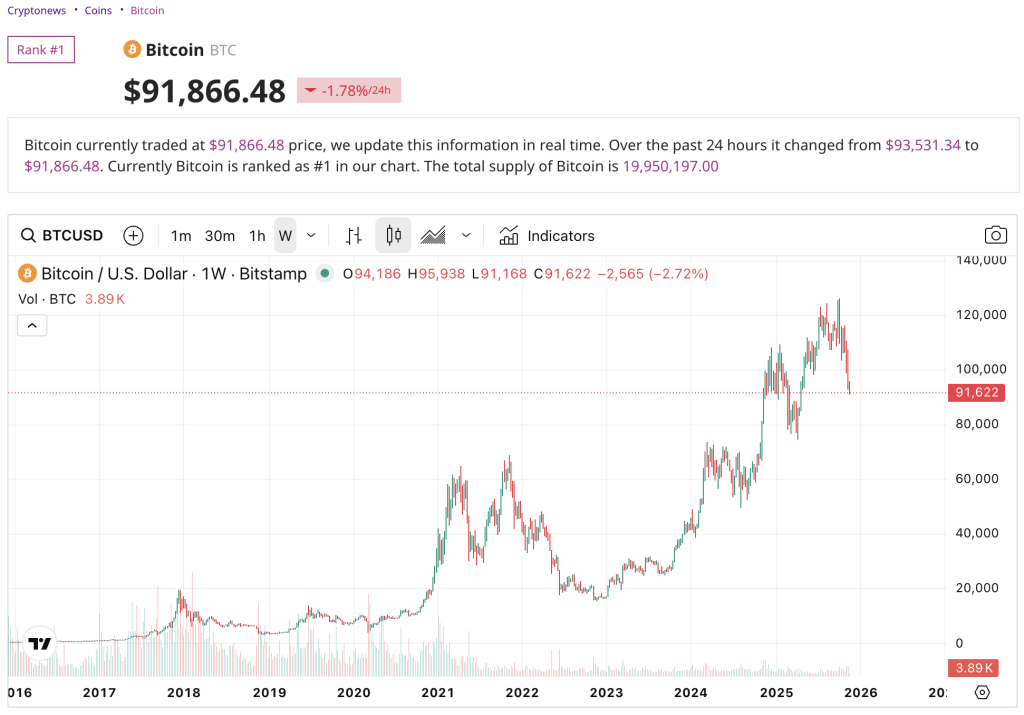Hacker Behind Musk & Obama Bitcoin Scam Faces Staggering $5M Bill as Stolen Crypto Soars
The British hacker responsible for one of the most infamous Twitter breaches in recent history has been ordered to surrender more than £4 million ($5 million) in cryptocurrency, after the value of his stolen digital assets surged during his time behind bars.
Joseph James O’Connor, 26, was jailed in the United States in 2023 for orchestrating the July 2020 Twitter attack that compromised the accounts of global figures, including Barack Obama, Joe Biden, Elon Musk, Jeff Bezos, Kim Kardashian, and other world leaders, tech executives, and major brands.
Using access to Twitter’s internal administrative tools, O’Connor and his accomplices hijacked more than 130 accounts and pushed tweets urging followers to send Bitcoin with promises of receiving double in return.
Prosecutors said the group collected more than $794,000 in the scam.
This week, the UK’s Crown Prosecution Service (CPS) confirmed it had secured a civil recovery order targeting 42.378 BTC, 235.329 ETH, 143,273.57 BUSD, and 15.23 USDC linked to O’Connor, now valued at roughly £4.1 million.
The assets, once worth only a fraction of that amount at the time of the hack, will be liquidated by a court-appointed trustee. O’Connor, who now lives in Spain, did not participate in the London hearing, but his mother said he was willing to forfeit all remaining interest in the funds.
O’Connor pleaded guilty in the United States to a long list of offenses, including computer intrusion conspiracies, wire fraud conspiracy, money laundering conspiracy, extortion, threatening communications, and stalking a 16-year-old victim.
He was extradited from Spain and sentenced to five years in prison before being deported earlier this year.
The CPS had previously obtained a Property Freezing Order during extradition proceedings to prevent the cryptocurrency from being moved.
Adrian Foster, Chief Crown Prosecutor for the CPS Proceeds of Crime Division, said the case shows that authorities will pursue criminal profits even when convictions occur overseas.
“We were able to use the full force of the powers available to us to ensure that even when someone is not convicted in the UK, we are still able to ensure they do not benefit from their criminality,” he said.
Bitcoin Surge Amplifies Value of Assets Stolen in 2020 Twitter Hack
Bitcoin’s rise has increased the value of O’Connor’s stolen holdings. At today’s price near $92,800, almost ten times higher than in mid-2020, the remaining assets ballooned to more than £4.1 million, prosecutors said.
 BTC Weekly Price Chart Source:Cryptonews
BTC Weekly Price Chart Source:Cryptonews
The Twitter breach was one of the biggest social media security failures ever recorded. X, then Twitter, briefly locked down verified accounts as the scam spread to more than 350 million users.
Investigators later said two unwitting British associates opened crypto accounts used by O’Connor but were not involved in the fraud.
The case arrives during a period of heightened concern over crypto-related cybercrime, with governments worldwide reporting rapid growth in sophisticated digital extortion schemes.
Law enforcement agencies have also pointed out a sharp rise in crypto laundering. According to Global Ledger data cited in the filings, hackers stole more than $3 billion across 119 incidents in the first eight months of 2025 alone, already surpassing 2024’s total by 1.5 times.
Meanwhile, separate enforcement actions continue internationally. In November, the US Justice Department launched efforts to seize more than $15 million in USDT tied to North Korea’s APT38 hacking unit, connected to a series of major 2023 exchange breaches.
Europol also dismantled a cybercrime syndicate responsible for creating more than 49 million fake online accounts, including fraudulent profiles on crypto platforms, using a large-scale SIM-farm infrastructure.
Despite rising global investigations, recent data suggests the industry is experiencing short-term improvements in security.
October 2025 was recorded as the safest month of the year for crypto platforms, with only $18.18 million lost to hacks, an 85% drop from September.
You May Also Like

Understanding the Ethereum Interoperability Layer (EIL): Bridging L2 Fragmentation and Building a Seamless Cross-Chain Experience

Bitcoin 8% Gains Already Make September 2025 Its Second Best

